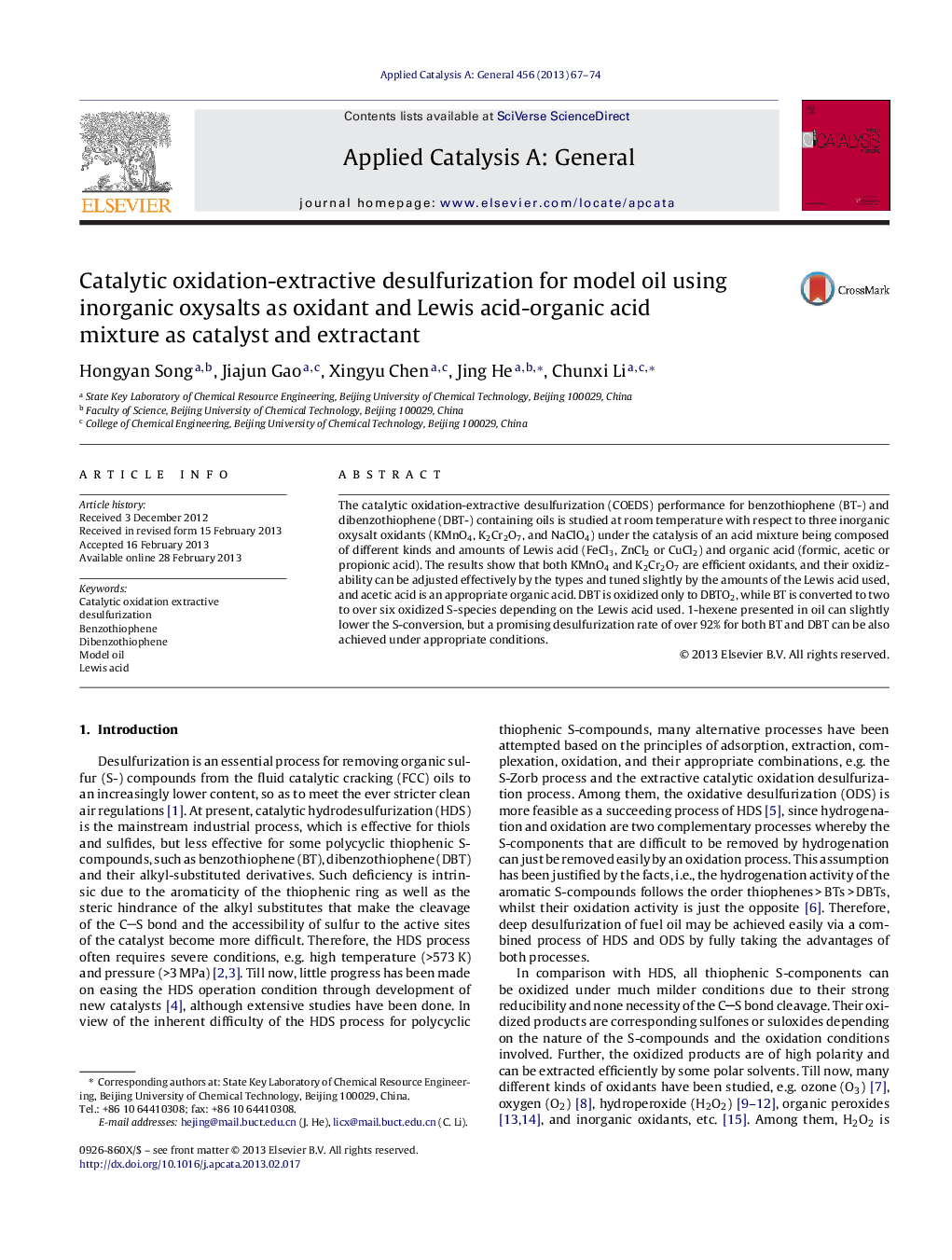| Article ID | Journal | Published Year | Pages | File Type |
|---|---|---|---|---|
| 40520 | Applied Catalysis A: General | 2013 | 8 Pages |
The catalytic oxidation-extractive desulfurization (COEDS) performance for benzothiophene (BT-) and dibenzothiophene (DBT-) containing oils is studied at room temperature with respect to three inorganic oxysalt oxidants (KMnO4, K2Cr2O7, and NaClO4) under the catalysis of an acid mixture being composed of different kinds and amounts of Lewis acid (FeCl3, ZnCl2 or CuCl2) and organic acid (formic, acetic or propionic acid). The results show that both KMnO4 and K2Cr2O7 are efficient oxidants, and their oxidizability can be adjusted effectively by the types and tuned slightly by the amounts of the Lewis acid used, and acetic acid is an appropriate organic acid. DBT is oxidized only to DBTO2, while BT is converted to two to over six oxidized S-species depending on the Lewis acid used. 1-hexene presented in oil can slightly lower the S-conversion, but a promising desulfurization rate of over 92% for both BT and DBT can be also achieved under appropriate conditions.
Graphical abstractFigure optionsDownload full-size imageDownload high-quality image (160 K)Download as PowerPoint slideHighlights► BT and DBT in model oil are removed easily via a catalytic oxidation-extractive process. ► KMnO4 or K2Cr2O6 is an efficient oxidant for the sulfur in some Lewis organic acid mixtures. ► The catalysis of the oxidant can be effectively adjusted by the type and amount of Lewis acid. ► The acetic acid-Lewis acid mixtures are effective extractants for the oxidized sulfurs.
